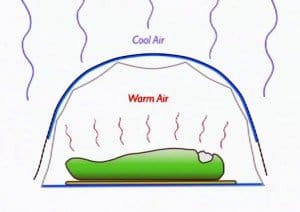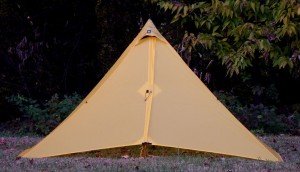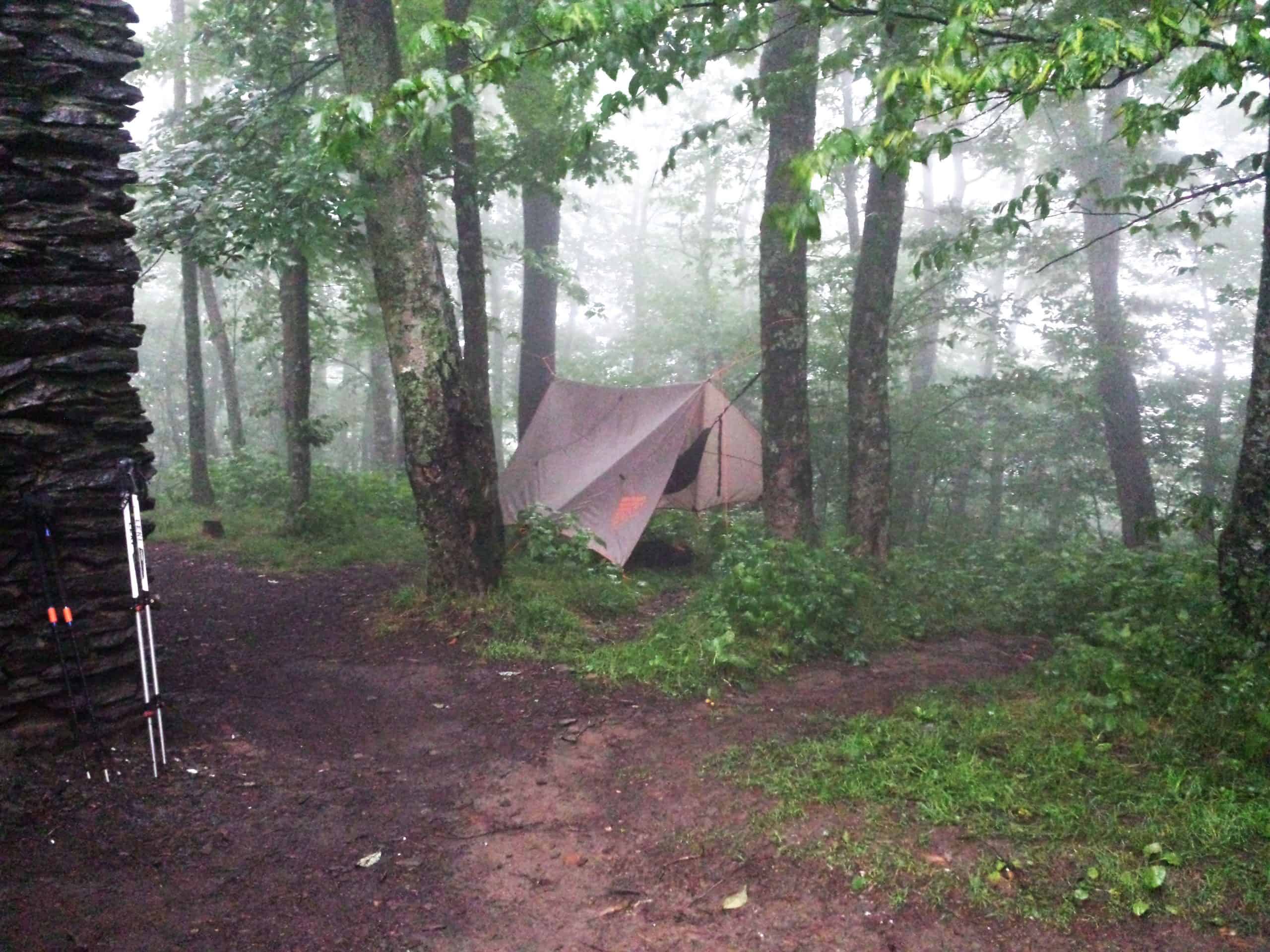One of the most important things you must have on any camping trip is your shelter. While are many types of shelters you can take with you one thing is for sure, you almost always should take one. Even if you decide to “cowboy camp” it is always good to have a backup plan in case the weather does not cooperate. In this article I will be discussing the many different types of shelter options you have.
Good shelter functions
Portability – Your shelter must be relatively light weight and easy to carry. If you are taking a larger shelter for multiple people than you can divide the weight by the amount of people staying in it and split some of the weight to make it even. The extra weight for a larger shelter for multiple people is usually minimum.
Environment Resistant – The shelter must be able to protect you from the environment. This can include precipitation, wind, and insects. You will not have to have protection from all these at all times. For example, in the cold of the winter you should not expect to protect yourself from bugs.
Expert Tip: It is not weight efficient to count cold weather into your environment resistance for your shelter because your sleeping bag and clothes should be protecting you from the cold.
Adaptable – Your shelter should be able to adapt to what the environment is flowing at you. For example, you may be needing protection from heavy rain one day and then the next day protection from insects. By having an adaptable shelter you can change it for exactly what you are needing.
Condensation Resistant

What is condensation? Condensation is water that collects on cold surfaces when humid air is in contact with it. Warmer air can hold more moisture in it than colder air. With this being the case, when the air temperature drops some of the moisture in the air will form water droplets on surfaces.
Now that you know what condensation is you should also know that condensation can form on the interior of your tent which can cause problems. To prevent this problem you can reduce the humidity inside your shelter. This is done by having good ventilation to allow the humid air to escape. Choosing an area that is warmer and more dry when setting up your shelter can also help.
Tents
Tents are fully enclosed with custom cuts and shapes. They will include poles and in some cases guylines.
Double Wall Tents

Double wall tents offer great protection from all the elements such as rain, wind, and bugs. This type of tent is also resistant to condensation problems on the inner wall because it is made of a non-waterproof breathable nylon canopy with panels of no-see-um mesh. The tent then has a polyester waterproof rainfly that goes over top.
The biggest problem with double wall tents is they are heavy compared to other setups. Because of this they are better used for multiple people because the weight can be split between the people staying in the tent. They are also not very adaptable.
Single Wall Tents

The single wall tent is fully enclosed with a waterproof floor and waterproof breathable fabric for the walls. Because the fabric is never extremely breathable, condensation can become a problem. If the tent has no-see-um mesh windows and doors this can help with the condensation.
Because of the design of a singlewall tent, you’re completely sealed off from the environment. This type of tent is also commonly pitched from the inside. You will see this tent commonly used by mountaineers.
Tarp Systems
Flats
A flat tarp is exactly what it sounds like, just a flat sheet of fabric. While this may seem useless, if you know what you are doing this can be configured to be exactly what you want. In heavy rain from all directions it can be pitched all the way to the ground. While in warm dry weather you can pitch it open for good ventilation.
A-Frame

An a-frame tarp is meant to be pitched in an a-frame set up and only an a-frame set up. They are designed with a catenary curve which helps with the sagging. This is a simple and common designed for tarp setups. The two open ends can be a problem in heavy storms though. You can try pitching these type of tarps and other configurations but because of the way this tarp is made it will sag if not pitched the way it is supposed to be.
Mids

A mid tarp is shaped like a pyramid and can only be pitched in this way. These tarps are great in the winter and hold up well in bad weather. Mid tarps are generally heavier than other tarps. They are also limited on ventilation which can lead to condensation problems. To battle the condensation problems you can pitch them off of the ground and leave the door open.
More Components of Tarp Systems
In tarp systems the most important part is the tarp which is obvious, but having other components with the tarp can make tarp systems much more versatile.
Ground Cloth – This is a fabric or cloth that can be laid on the ground to protect you from the moist ground, snow, or dirt. Some people use trash bags, blankets, and other things that they can think of. Other people simply use their sleeping pad and nothing else.

Bug Head Nets – These completely cover the head and neck and are made of bug mesh. They help to protect your head and neck from insects. This is a lightweight option compared to other options.
Bug Skirt – The bug skirt is a small strip of bug mesh that attaches to the bottom perimeter of your tarp. This can help when you do not pitch the tarp all the way to the ground. Tall grass and rough ground surfaces along with wind can cause issues with a bug skirt.
Bug Nests – These go under a tarp and are completely enclosed with a waterproof floor. You can find them in multiple shapes that will work with specific tarps.

Bug Bivies – These are like bug nests, completely enclosed with a waterproof floor, however they are only made to cover your sleeping bag.
Water Resistant Bivy Sacks – These are like bug bivies but are made of a water resistant nylon or polyester fabric. They will have a no-see-um bug mesh panel. These are popular with flat tarp and a-frame tarp users because they can serve multiple purposes such as ground cloths, bug protection, and adding additional warmth. You can also use these without a tarp on dry nights.
Tarp Tents
Tarp tents are lighter than a single or double wall tent. They are not widely made or popular. Tarp tents will have a bug mesh between the tarp and the waterproof floor. Even with this they will still have condensation problems due to the lack of ventilation. You can leave the door open to help with this but you still cannot control the ventilation like you can with tarp systems.
Tarp tents are not as adaptable as tarp systems. You cannot leave some of the parts at home like you can with a tarp system.
Waterproof Breathable Bivy Sacks
Waterproof breathable bivy sacks are typically used as emergency shelters although some hikers use them as their normal shelter. Just as the name says, these are made of a waterproof breathable material. They can get very stuffy inside because of lack of ventilation and breathability which means they will have a condensation problem. The good thing about them is they are a much lighter option that most tents. But because they are so small you really cannot do much inside them such as cooking.
Hammocks

Hammocks can be suspended anywhere you find two trees. Because they keep you off of the ground you will have a much more comfortable sleep. In hot weather you will have air flowing around you however when it gets chilly your underside will get cold through the hammock.
Depending on what model you get, you can make it modular. Brands such as ENO have everything separate so you can customize it to what you want. Pitching a hammock can be harder than other options but I feel that the benefits are worth it.
As you can see there are many options for a shelter when you are out camping in the backcountry. With this many options available it can be hard to decide which one is right for you. In my case I have tried several different options and will probably try several more. For the time being I am currently doing hammock camping and am mostly satisfied with it.
I hope you found this article helpful and if you did please share it with your fellow hikers so that they can find the same help you did. If you have any questions or comments please leave a comment below.
